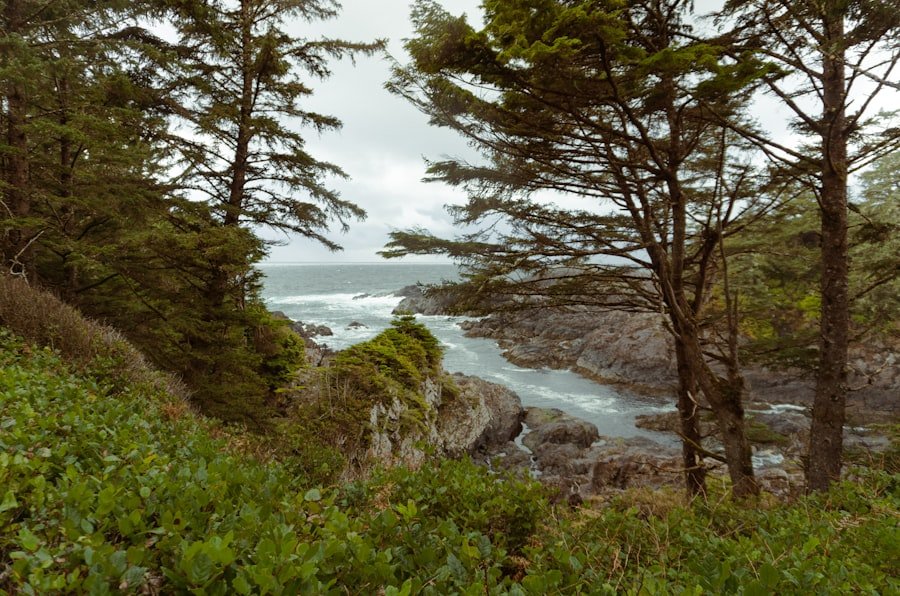When I think about the best time to go whale watching in Sydney, I can’t help but feel a sense of excitement. The prime season for spotting these magnificent creatures typically spans from May to November. During these months, the waters off the coast of Sydney become a bustling thoroughfare for migrating whales, particularly the majestic humpback whales.
As they journey from the frigid waters of Antarctica to the warmer breeding grounds of the Great Barrier Reef, I find it exhilarating to imagine being part of this natural spectacle. The peak months, particularly August and September, are when the whales are most active, breaching and tail-slapping, providing unforgettable sights for those lucky enough to witness them. However, it’s not just about the whales; the weather during this period is generally pleasant, making it an ideal time for outdoor activities.
The crisp winter air is invigorating, and the clear skies often provide stunning views of the coastline. I’ve found that planning a whale watching trip during this time not only enhances my chances of seeing these incredible animals but also allows me to enjoy the beauty of Sydney’s landscape. The combination of whale sightings and scenic views creates a memorable experience that lingers long after the tour is over.
The Most Popular Whale Watching Spots in Sydney
As I explore the various whale watching spots in Sydney, I quickly realize that there are several prime locations that offer breathtaking views and excellent opportunities for sightings. One of my favorite spots is the iconic Sydney Harbour. The juxtaposition of the city skyline against the backdrop of the ocean creates a stunning visual experience.
From here, I can often see whales breaching in the distance, their massive bodies momentarily breaking the surface before disappearing into the depths. The excitement of spotting a whale while surrounded by such urban beauty is truly unparalleled. Another fantastic location is the coastal cliffs of Bondi and Coogee.
The dramatic scenery along this stretch of coastline provides an excellent vantage point for whale watching. I love taking a leisurely walk along the coastal path, keeping my eyes peeled for any signs of movement in the water. The thrill of spotting a spout or a tail fluke is always exhilarating.
Additionally, there are numerous boat tours that depart from these areas, allowing me to get even closer to the action. Whether I’m on land or at sea, these popular spots never fail to deliver an unforgettable whale watching experience.
What to Expect During a Whale Watching Tour

When I embark on a whale watching tour, I always feel a mix of anticipation and excitement. The experience typically begins with a safety briefing from the crew, who are knowledgeable about both the whales and the local marine environment. They provide valuable information about what to look for and how to behave during our encounter with these gentle giants.
As we set sail, I can feel the energy on board; everyone is eager to catch a glimpse of the whales. As we venture further out to sea, I find myself captivated by the vastness of the ocean and the thrill of being on a boat surrounded by nature. The crew often shares interesting facts about whale behavior and migration patterns, which adds depth to my understanding of these magnificent creatures.
When we finally spot our first whale, it’s an exhilarating moment filled with gasps and cheers from everyone on board. Watching a whale breach or spy-hop is a sight that leaves me in awe, reminding me of the beauty and wonder of nature.
The Types of Whales You Can See in Sydney
One of the most fascinating aspects of whale watching in Sydney is the variety of species I might encounter during my trips. The humpback whale is undoubtedly the star of the show during migration season. These whales are known for their acrobatic displays, often breaching and slapping their tails against the water.
Witnessing their playful behavior is always a highlight for me, as it showcases their sheer size and grace. In addition to humpbacks, I’ve also had the pleasure of spotting southern right whales, which are known for their distinctive callosities on their heads. These gentle giants tend to be more elusive than humpbacks but are equally impressive when seen up close.
Occasionally, I’ve even spotted orcas and minke whales in these waters, adding an element of surprise to my whale watching adventures. Each encounter is unique, and I cherish every moment spent observing these incredible marine mammals in their natural habitat.
Tips for a Successful Whale Watching Experience
To ensure that my whale watching experience is as enjoyable as possible, I’ve learned a few tips along the way. First and foremost, I always check the weather conditions before heading out. A clear day with calm seas not only enhances visibility but also makes for a more comfortable ride.
Dressing in layers is also essential; while it may be warm on land, it can get chilly out on the water.
I’ve found that bringing along binoculars can significantly enhance my experience as well.
While many tours provide opportunities for close encounters, having binoculars allows me to spot whales from a distance and observe their behavior without disturbing them.
Additionally, I make sure to have my camera ready to capture those fleeting moments when a whale breaches or shows its tail fluke. Lastly, patience is key; sometimes it takes time to spot a whale, but when it finally happens, it’s well worth the wait.
How to Support Whale Conservation Efforts in Sydney

As much as I enjoy whale watching, I also recognize the importance of supporting conservation efforts to protect these magnificent creatures and their habitats. One way I can contribute is by choosing eco-friendly tour operators that prioritize sustainable practices. These companies often follow guidelines that minimize disturbances to marine life and educate passengers about responsible wildlife viewing.
Additionally, I make an effort to stay informed about local conservation initiatives and participate in community events focused on marine protection. Whether it’s beach clean-ups or educational workshops, every little bit helps in preserving the delicate balance of our ocean ecosystems. By supporting organizations dedicated to whale conservation, I feel empowered to make a positive impact on these incredible animals’ future.
Combining Whale Watching with Other Sydney Attractions
One of the things I love about whale watching in Sydney is that it can easily be combined with other attractions in this vibrant city. After an exhilarating morning on the water, I often find myself exploring nearby landmarks such as the Sydney Opera House or taking a stroll through the Royal Botanic Garden. The proximity of these attractions makes it convenient to create a full day of adventure.
I also enjoy visiting local cafes or restaurants after my tour to savor some delicious seafood while reflecting on my whale watching experience. The culinary scene in Sydney is diverse and vibrant, offering plenty of options for every palate. By combining whale watching with other activities, I can make the most out of my time in this beautiful city while creating lasting memories.
Choosing the Right Whale Watching Tour Company
Selecting the right whale watching tour company can significantly enhance my overall experience. I always do my research beforehand, looking for operators with positive reviews and a strong commitment to sustainability. It’s important for me to choose a company that prioritizes safety and has knowledgeable guides who can provide insights into whale behavior and marine ecology.
I also consider factors such as group size and boat type; smaller groups often lead to more personalized experiences and better opportunities for viewing whales up close.
Additionally, I appreciate companies that offer guarantees or rescheduling options in case of unfavorable weather conditions or low sightings. By taking the time to choose wisely, I ensure that my whale watching adventure will be both enjoyable and memorable.
In conclusion, whale watching in Sydney is an experience that combines natural beauty with thrilling encounters with some of nature’s most magnificent creatures. From choosing the best time to go and knowing where to look for whales to understanding what to expect during a tour and how to support conservation efforts, every aspect contributes to making this adventure unforgettable. By planning ahead and being mindful of my choices, I can fully immerse myself in this incredible experience while also playing a part in protecting these majestic animals for future generations to enjoy.
If you’re planning on going whale watching in Sydney, make sure to avoid any major faux pas by checking out this helpful article here. For more information on other activities and attractions in New South Wales, visit NSW Diary. And if you’re looking for a review of the best whale watching tours in Sydney, be sure to read this article here.
FAQs
What is whale watching?
Whale watching is the activity of observing whales in their natural habitat, usually from a boat or from the shore.
When is the best time for whale watching in Sydney?
The best time for whale watching in Sydney is during the annual migration season, which typically runs from May to November. The peak season is usually from mid-June to mid-July.
What types of whales can be seen in Sydney?
During the migration season, humpback whales are the most commonly sighted species in Sydney. Occasionally, southern right whales and minke whales can also be spotted.
Where are the best spots for whale watching in Sydney?
Popular whale watching spots in Sydney include Cape Solander in Kamay Botany Bay National Park, North Head in Manly, and South Head in Watsons Bay. Whale watching cruises also operate from Circular Quay and other harbors in Sydney.
What should I bring for a whale watching trip in Sydney?
It is recommended to bring warm clothing, sunscreen, a hat, sunglasses, and a camera with a zoom lens. Binoculars can also enhance the whale watching experience.
Are there any regulations for whale watching in Sydney?
Yes, there are regulations in place to protect the whales and ensure the safety of both the whales and the observers. Boats must maintain a safe distance from the whales, and there are speed restrictions in place when within a certain proximity to the whales.




